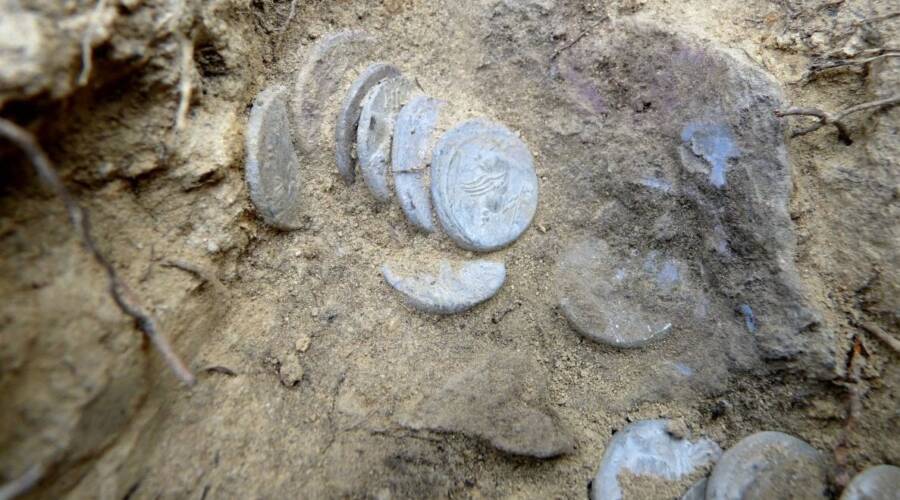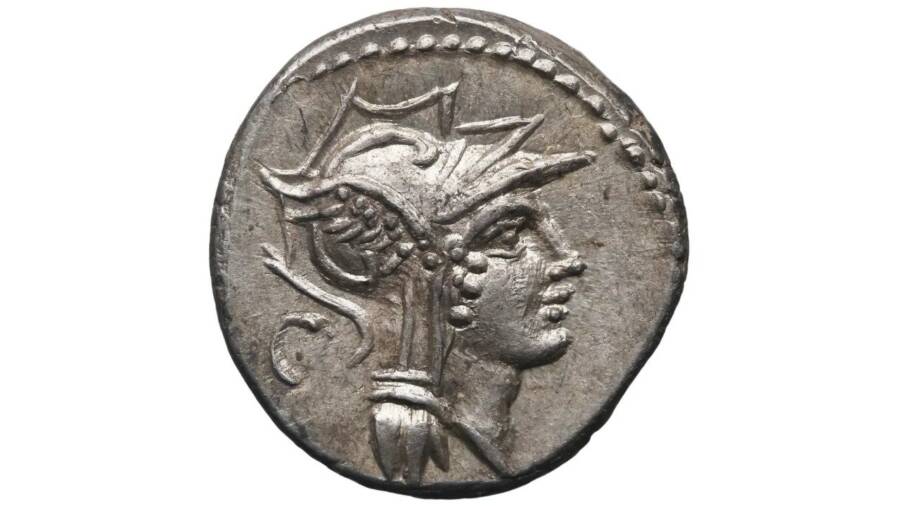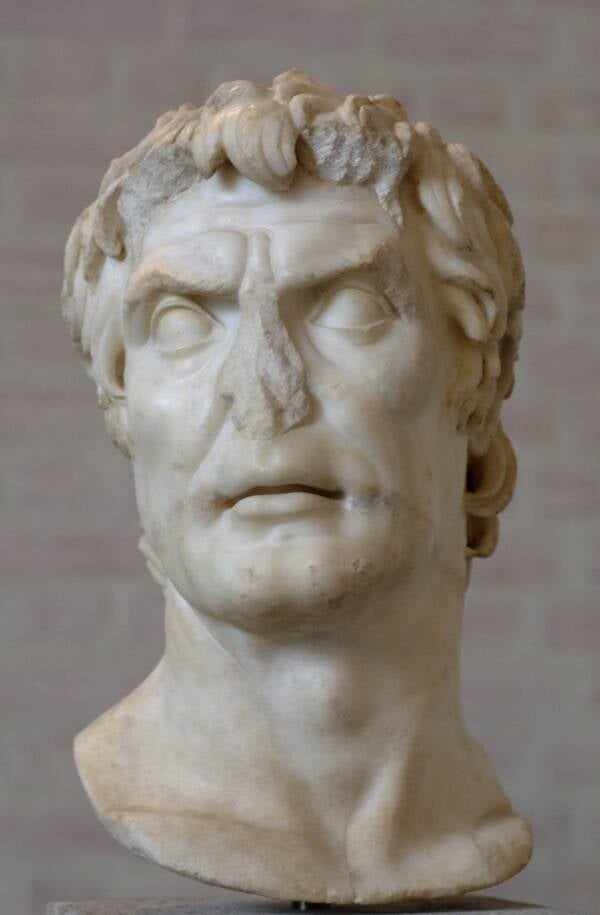Concealed inside a small pot, the coins may have been hidden away for safekeeping by a soldier or a businessman during a turbulent moment in Roman history.

FRANCO SAMMARTINOThe coins may have belonged to a soldier and are worth thousands of dollars today.
While walking through a recently cut area of forest near Livorno, a province in Tuscany, Italy, a member of the Livorno Paleontological Archaeological Group spotted something sparkling on the ground. Further investigation revealed a handful of 2,000-year-old Roman coins, some of 175 that archaeologists soon found buried in a small terracotta pot nearby.
“The coins have definitely been hidden — they constituted a ‘treasure’ or piggy bank,” Lorella Alderighi, an archaeologist for the provinces of Pisa and Livorno, told Live Science. “The easiest way to hide valuables was to bury them underground, away from homes where no one could find them.”
The oldest silver Roman denarii coins found at the site date from around 157 or 156 B.C.E., while the most recent were from around 83 or 82 B.C.E. Two are fragmented but the rest are in good condition.
The discovery raises the question of who buried the coins — and why.
According to a statement from the Livorno Paleontological Archaeological Group posted on Facebook, the coins may have been buried by a Roman soldier during an especially turbulent moment in Roman history.

Alberto Cecio/Soprintendenza ArcheologiaTwo of the coins are fragmented, but the rest are in remarkably good condition.
“The little treasure could be the savings of a soldier,” Livorno Paleontological Archaeological Group explained. As CNN notes, 175 denarii would have been equal to about a year and a half of a Roman soldier’s salary. (Today, however, the coins are worth between 20,000 and 25,000 euros.) The soldier may have buried his “treasure” during an era when civil war gripped the country.
Live Science reports that the coins were likely buried just a few years after the Social War, which saw Rome battling with its Italian neighbors, and around the same time that Roman general Lucius Cornelius Sulla successfully launched an attack against the Roman Republic in 82 B.C.E.

Public DomainA bust likely depicting the Roman general Lucius Cornelius Sulla, who installed himself as dictator following his successful attack on the Roman Republic.
“It was a very turbulent historical period,” Alderighi explained. “Sulla’s soldiers conquered territories as they advanced from south to north. But central Italy and Tuscany had not yet been conquered.”
Perhaps caught in the conflict, the soldier likely buried the coins in hopes of returning one day and retrieving his treasure. But his story has a sad end.
“This treasure is about a person’s life, the savings of a soldier’s life, and his hopes for building his farm,” Alderighi explained to CNN. “However, it also tells a sad story: the owner of the coins died before he could make his dreams come true using his savings. The coins tell his story.”
However, some historians aren’t certain that the coins belonged specifically to a soldier. Federico Santangelo, a professor of Classics and Ancient History at Newcastle University, noted that the treasure hoard could have been buried by anyone seeking to preserve their savings during a violent era.
“I don’t think we should trace this money to a soldier, although in principle it is possible,” Santangelo, who was not involved in the study of the coins, told Live Science. “A number of people at times of crisis buried their stash of money and for whatever reason were prevented from retrieving it.”
Whoever buried the coins, they certainly illuminate a small — and tragic — moment in human history. With war on the horizon, someone gathered their savings, secured them in a terracotta pot, and carried them into the woods. They buried them in the dirt, hoping that one day they would return.
But something — death, war, violence — prevented them from retrieving their treasure. Instead, the carefully gathered coins lay buried for hundreds of years, completely forgotten, until someone walking through the woods happened to notice a glint of silver in the dirt.
After reading about the hoard of 2,000-year-old Roman coins found buried in a Tuscan forest, see how a badger led archaeologists to an “exceptional” hoard of Roman coins in a Spanish cave. Then, discover some of the most fascinating facts about ancient Rome.





